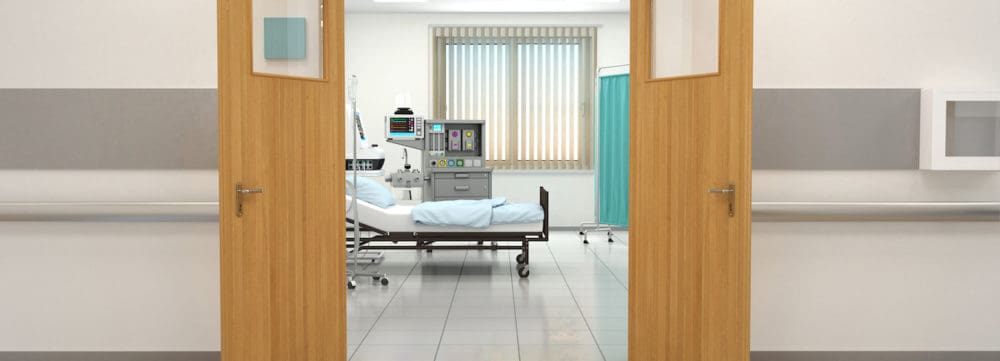Blog
Choosing The Right Doors for Hospital Design

Doors in the hospital setting are more important than you might think. They offer security, and privacy, and can incorporate germ-fighting properties in both the material, handles, and swing. Beyond that, doors are the gateway into the hospital and all of its areas. This means it will be the first experience and opportunity to make a good first impression.
If you’re a healthcare designer interested in germ reduction through design, patient satisfaction as well as form and function, it’s important that you choose the right door for each project.
Selecting The Door
When selecting a door for a particular space, there are many factors to take into consideration. The door material, the door handle, and also how the door swings. Each consideration will impact things like infection control.
Here is a list of the four most common door types for medical spaces, when to use them, and other considerations.
Swing Door
Swing doors are the most common of all door types, not just for hospitals, but generally all buildings. It’s simple to operate and universally recognizable. The door is hinged on one side to allow it to swing in or out. These doors are not recommended for tight spaces because the door swings open widely. Opening swing doors can also create airflow that spreads particles around, which may not be good for infection control. But swing doors are great for reducing noise levels.
Pocket Door
A pocket door slides into the wall. As the name suggests, it fits into a little ‘pocket’. These doors are ideal for saving space, which can be very beneficial for hospital design. This is because pocket doors not only save space, and integrate more smoothly throughout the building. One major downside to a pocket door is that it does not insulate noise very well. Additionally, pocket doors are often more difficult to repair and maintain.
Barn Door
A barn door is similar to a pocket door, but instead of sliding into the wall seamlessly, the door is hung from mounted sliders. The door and the sliders are completely visible, even in the open position. These doors are easier to maintain compared to pocket doors but can be louder when operating.
Operating Room Doors
Operating room (OR) doors are specially designed doors that are pivoted so they are double-action and able to open easily on either side. These doors typically have a glass or plastic panel for viewing and communication. These panels are important. Research shows that opening OR doors too frequently can increase the risk of infection. OR doors also usually have stainless steel kick plates on both sides to make them durable.
The kind of doors used in a healthcare environment matters. Make sure to consider the materials, handles, and swing when making your selection.
Marie Wikoff is the creator of Wikoff Design Studio based out of Reno, Nevada. Her expertise in healthcare design has helped modernize healthcare organizations locally, regionally, and internationally, improving patient experience and outcomes. Her credentials include Evidence-Based Design Accreditation and Certification (EDAC), American Academy of Healthcare Interior Designer (CHID), the National Council of Interior Design Qualification (NCIDQ) and LEED AP. Contact Marie Wikoff
Sources:
Mears, Simon C., et al. “Door Opening Affects Operating Room Pressure During Joint Arthroplasty.” Orthopedics, vol. 38, no. 11, 1 Nov. 2015, doi:10.3928/01477447-20151020-07.







